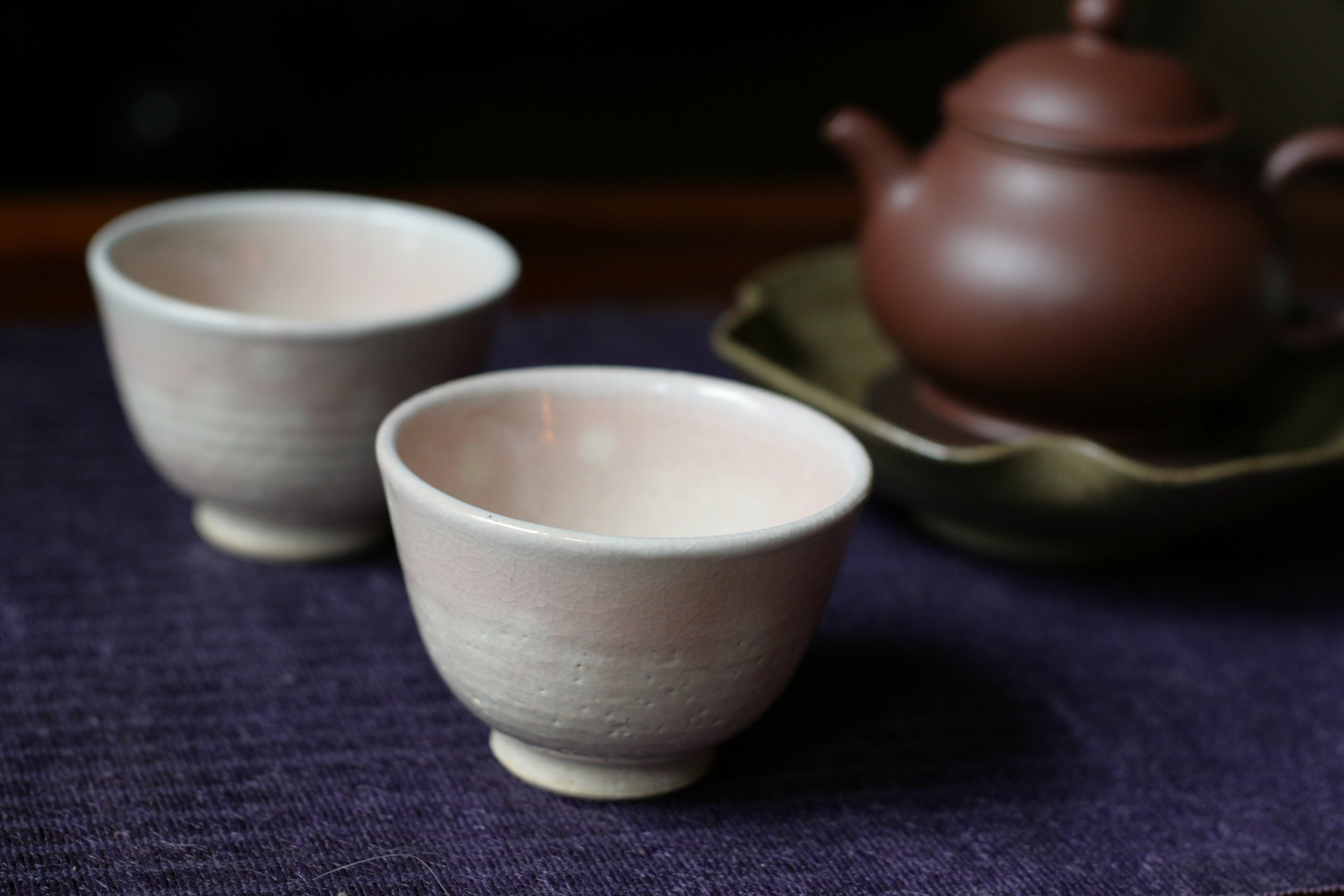 Image 1 of 6
Image 1 of 6

 Image 2 of 6
Image 2 of 6

 Image 3 of 6
Image 3 of 6

 Image 4 of 6
Image 4 of 6

 Image 5 of 6
Image 5 of 6

 Image 6 of 6
Image 6 of 6







Pink Hagi yaki teacup (44)
Pink Hagi yaki teacup. 8cm x 5.5cm. Sold individually.
Hagi city in Yamaguchi prefecture has been a center for ceramics production in Japan since the 17th century. Hagi tea ware has been revered by tea enthusiasts for centuries, its importance reflected in the common phrase, “First Raku, second Hagi, third Karatsu,” in reference to the requisite pieces of tea ware for any tea practitioner.
Stylistic elements of Hagi yaki:
Nanabake – “Seven transformations” of a Hagi vessel that naturally occur through use and the vessel’s absorption of tea/sake.
Kan-nyuu – fine lines in glaze that become more apparent with use. One of the “seven transformations.”
Wari-kodai/Kiri-kodai– cut foot, foot of the cup will have a notch taken out.
Mishima-tsuchi & Daido-tsuchi – local clay used to make vessels that is soft and rough-grained.
Rokuro-me – wheel thrown marks, the grooved lines made from the fingers while a piece is being thrown on the wheel.
Shira Hagi – “white Hagi”, Hagi yaki glazed in a white straw ash glaze.
Oni Hagi – “Demon Hagi”, Hagi yaki that uses a rough clay body, an underglaze rich in iron that turn black, and an overglaze of straw ash that turns white.
Ao Hagi – “blue Hagi”, a recent development that creates a blue glaze using traditional clays and straw ash glazes. First created by Seigan Yamane.
Gohonte – pale pink spots that appear naturally during firing in reduction with certain slip glazes.
Pink Hagi yaki teacup. 8cm x 5.5cm. Sold individually.
Hagi city in Yamaguchi prefecture has been a center for ceramics production in Japan since the 17th century. Hagi tea ware has been revered by tea enthusiasts for centuries, its importance reflected in the common phrase, “First Raku, second Hagi, third Karatsu,” in reference to the requisite pieces of tea ware for any tea practitioner.
Stylistic elements of Hagi yaki:
Nanabake – “Seven transformations” of a Hagi vessel that naturally occur through use and the vessel’s absorption of tea/sake.
Kan-nyuu – fine lines in glaze that become more apparent with use. One of the “seven transformations.”
Wari-kodai/Kiri-kodai– cut foot, foot of the cup will have a notch taken out.
Mishima-tsuchi & Daido-tsuchi – local clay used to make vessels that is soft and rough-grained.
Rokuro-me – wheel thrown marks, the grooved lines made from the fingers while a piece is being thrown on the wheel.
Shira Hagi – “white Hagi”, Hagi yaki glazed in a white straw ash glaze.
Oni Hagi – “Demon Hagi”, Hagi yaki that uses a rough clay body, an underglaze rich in iron that turn black, and an overglaze of straw ash that turns white.
Ao Hagi – “blue Hagi”, a recent development that creates a blue glaze using traditional clays and straw ash glazes. First created by Seigan Yamane.
Gohonte – pale pink spots that appear naturally during firing in reduction with certain slip glazes.